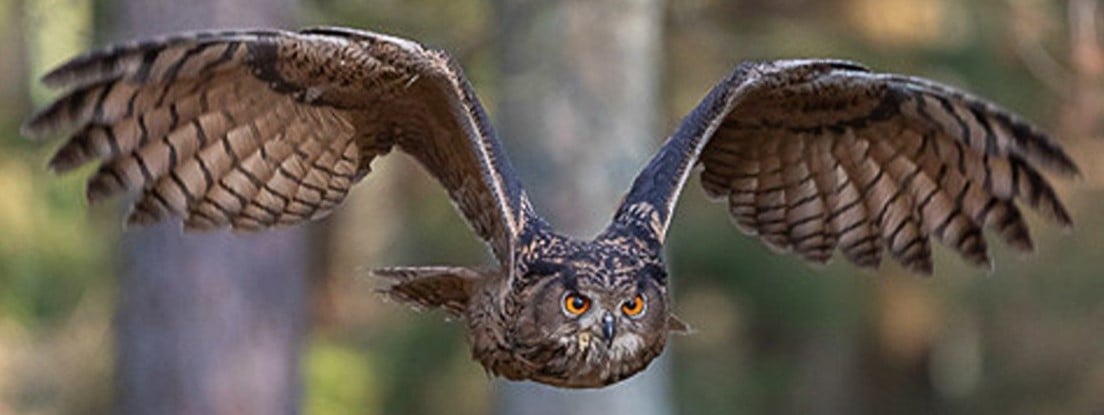Superbowl
For owls that are superb.

US Wild Animal Rescue Database: Animal Help Now
International Wildlife Rescues: RescueShelter.com
Australia Rescue Help: WIRES
Germany-Austria-Switzerland-Italy Wild Bird Rescue: wildvogelhilfe.org
If you find an injured owl:
Note your exact location so the owl can be released back where it came from. Contact a licensed wildlife rehabilitation specialist to get correct advice and immediate assistance.
Minimize stress for the owl. If you can catch it, toss a towel or sweater over it and get it in a cardboard box or pet carrier. It should have room to be comfortable but not so much it can panic and injure itself. If you can’t catch it, keep people and animals away until help can come.
Do not give food or water! If you feed them the wrong thing or give them water improperly, you can accidentally kill them. It can also cause problems if they require anesthesia once help arrives, complicating procedures and costing valuable time.
If it is a baby owl, and it looks safe and uninjured, leave it be. Time on the ground is part of their growing up. They can fly to some extent and climb trees. If animals or people are nearby, put it up on a branch so it’s safe. If it’s injured, follow the above advice.
For more detailed help, see the OwlPages Rescue page.
view the rest of the comments

Are you talking about why the background is blurred or the line close up with 2 blurry spots that look to be in the foreground?
Yes, and in particular this:
Almost like a tool auto-blurred what it though to be the foreground or similar.
I'm not the best person to explain this, but I think you are referring to the "depth of field" of the images.
This is either artistic choice or limitations of the lens used. I think these images use a combo of both of those things.
Owl photos are usually taken from far away, so the distance to the subject is very far, and the focal length of the large lenses sets physical limits for the lens to have everything in focus.
Some long lenses have fixed apertures, the hole that lets light through the lens into the camera's sensor. Others are adjustable, but the photographer may still want that blurry background there to draw your focus to what is in focus more, in this case they wanted to highlight not just the owl, but also the tree. By having most everything else blurred, it may not appear as natural, from how our eyes work compared to a camera and lens, but now instead of spending time looking at the background, you still get the general "feel" of the background while all your attention is placed on what the photographer wants you to be looking at.
This short video (about 3 min, I copied the annoying into) goes into the 3 elements I mentioned and shows you the resulting blue or non-blur.
There are also image editing tools that can enhance this. On my Pixel, Google calls it portrait blur.
Thank you so much for the explanation -- I get it now.
I just realised now that those areas of holes in the tree, and that they show what's behind. (I though they were part of the tree.)
I'm facepalming internally now.
Ha, no worries! I was worried I wasn't explaining the right thing when you called it the foreground, but I'm glad we got it figured out.